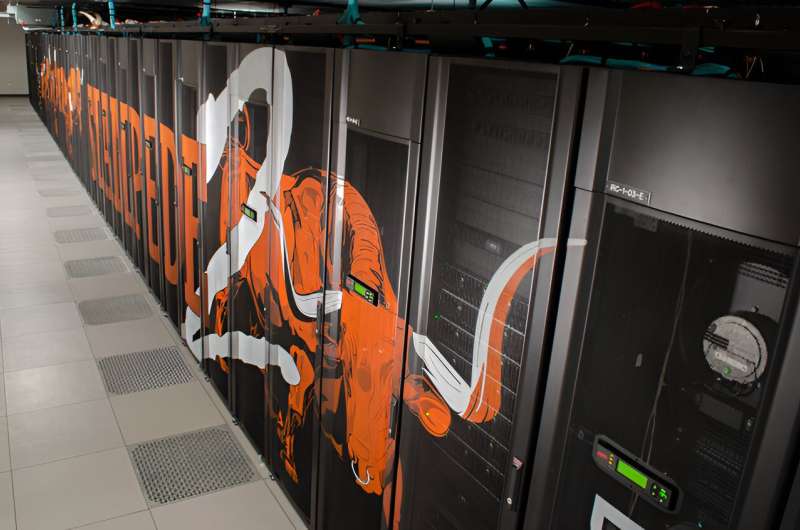
Most people do not give the U.S. electric grid a second thought—we flip a switch, and the lights come on. Behind the scenes are thousands of power plants and utilities linked by millions of miles of transmission lines. To make raw electricity useful, grid transformers convert high voltage to lower voltage that millions of households can plug into.
Transformers are aging and approaching an average of being 30 to 40 years old. Plus, they face more stress than ever before brought on by factors such as renewable energy and by extreme weather events such as hurricanes, heat waves, and winter storms. Case in point—the 2021 event in Texas that left millions powerless.
That is when University of Texas at Austin (UT Austin) researchers decided to look inside grid transformers to see if they could make them better. Grid transformers are filled with copper windings, other metallic components, and cellulose-based electrical insulation like kraft paper. The cellulose insulation is a great electrical insulator essential in the process of 'stepping down' voltage, but it also traps heat, which can lead to overheating.
"We've researched a new class of nanomaterials in which we take conventional cellulose-based paper and dope it with high thermal conductivity nanometer—and micrometer-sized particles," said Vaibhav Bahadur, an associate professor in the Cockrell School of Engineering at UT Austin.
Bahadur is the corresponding author of a study that modeled the impact of high thermal conductivity paper on the performance and life of grid transformers published in Heliyon. This is the first study that predicts the extent to which tuning the thermal conductivity of paper can enhance transformer life.
Simulations on the Stampede2 supercomputer of the Texas Advanced Computing Center (TACC) helped Bahadur and his collaborators engineer solutions to overheat grid transformers—a critical component of the electric grid.
Collaborators at the University of Maryland and the USDA Forest Products Laboratory fabricated the high thermal conductivity paper using nanoparticles of boron nitride. Bahadur's lab built a 3D model of the transformer to mimic an actual grid transformer taken apart and studied by study co-author Robert Hebner, also in the Cockrell School of Engineering.
"The experimental part of the study was critical in testing whether to invest in improving the transformer installation," Hebner said. "We had a transformer donated to The Center for Electromechanics, which was powered by UT Austin's one-megawatt microgrid. We could connect it and run the temperatures up and down, and we could measure how the transformer behaved. The model and the measurements meshed very well," Hebner said.
"Our results indicate that if the thermal conductivity is increased by a few times using the engineered paper, the hotspot temperature inside a transformer can be reduced by between 5 to 10 °C," he added. "In most conditions, that should be enough to double or triple the life of the transformer."
The Bahadur Research Group was awarded allocations on TACC's Stampede2 supercomputer, a National Science Foundation computational workhorse for UT Austin researchers and thousands of other researchers in the U.S. open science community.
"This model was simulated using TACC resources to predict the thermal performance," Bahadur said. "We modeled the thermal conductivity as a varying parameter, and we figured out the extent of improvement needed in thermal conductivity to see a meaningful temperature reduction."
The main computational challenge was the sheer immensity of modeling the details inside an actual transformer.
"To accurately estimate temperatures, we used a fine-sized mesh based on finite element methods and modeled the conduction through the diffusion heat transfer equation—the computational costs are high in doing so," Bahadur said. "The main reason we used Stampede2 was to get simulations done in a matter of minutes/hours and not wait for days to get our results."
Next, the researchers will test a small-scale transformer prototype and add the thermal conducting paper to study how it behaves in an operating environment with fluctuating loads.
This research has the possibility to find applications in the real world, where new transformers could be made with improved nano and micro particle enhanced thermal insulating paper. Old transformers could be retrofitted with the new paper during routine refurbishment.
"We started not as a transformer project but as a semiconductor project. This research aims to take a lot of the electronic devices that we have and make them operate better by operating cooler and more efficiently," Hebner added.
More information: S. Bilyaz et al, Modeling the impact of high thermal conductivity paper on the performance and life of power transformers, Heliyon (2024). DOI: 10.1016/j.heliyon.2024.e27783
Citation: Cooler transformers could help electric grid (2024, April 16) retrieved 16 April 2024 from https://techxplore.com/news/2024-04-cooler-electric-grid.html
This document is subject to copyright. Apart from any fair dealing for the purpose of private study or research, no part may be reproduced without the written permission. The content is provided for information purposes only.
